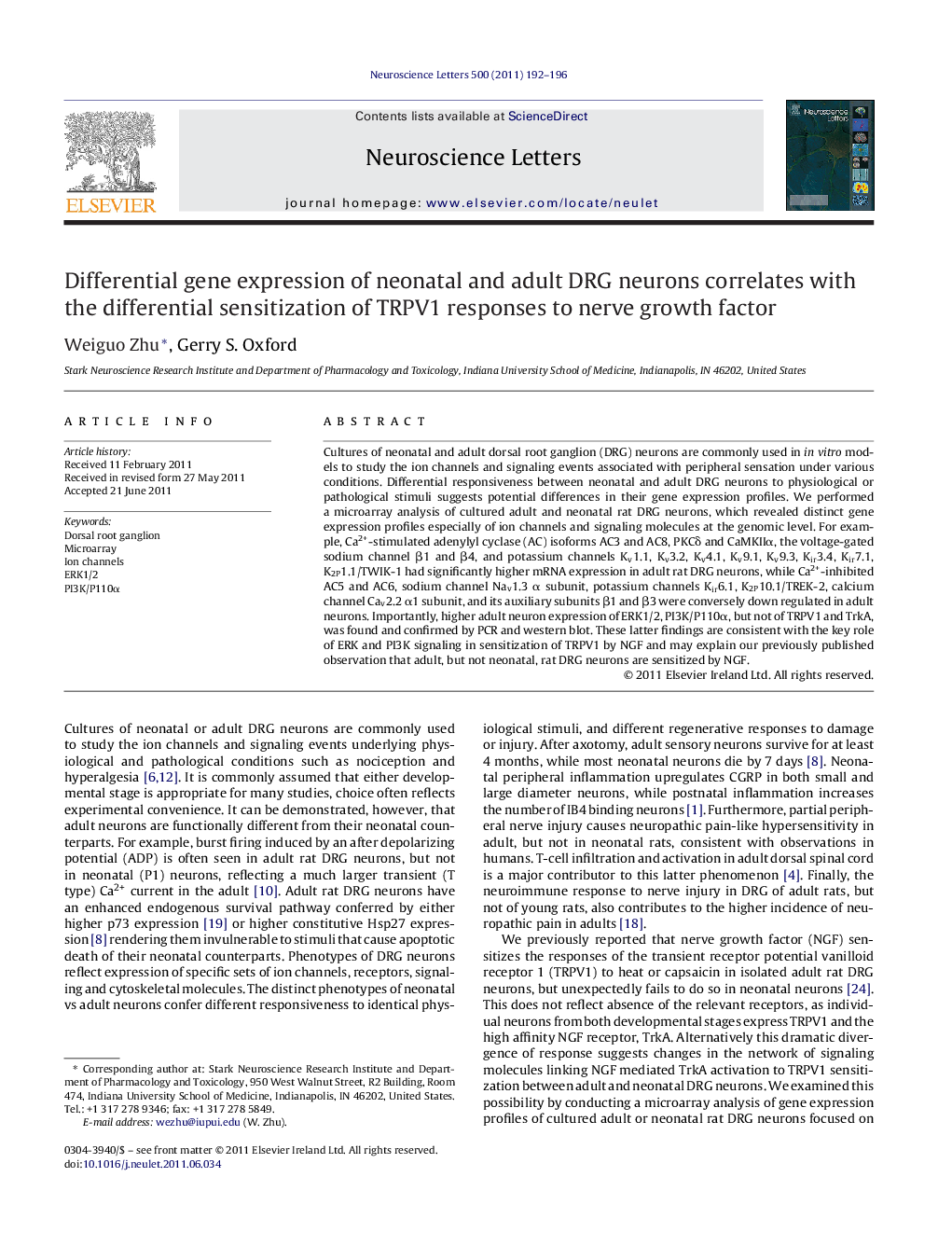| Article ID | Journal | Published Year | Pages | File Type |
|---|---|---|---|---|
| 4345235 | Neuroscience Letters | 2011 | 5 Pages |
Cultures of neonatal and adult dorsal root ganglion (DRG) neurons are commonly used in in vitro models to study the ion channels and signaling events associated with peripheral sensation under various conditions. Differential responsiveness between neonatal and adult DRG neurons to physiological or pathological stimuli suggests potential differences in their gene expression profiles. We performed a microarray analysis of cultured adult and neonatal rat DRG neurons, which revealed distinct gene expression profiles especially of ion channels and signaling molecules at the genomic level. For example, Ca2+-stimulated adenylyl cyclase (AC) isoforms AC3 and AC8, PKCδ and CaMKIIα, the voltage-gated sodium channel β1 and β4, and potassium channels Kv1.1, Kv3.2, Kv4.1, Kv9.1, Kv9.3, Kir3.4, Kir7.1, K2P1.1/TWIK-1 had significantly higher mRNA expression in adult rat DRG neurons, while Ca2+-inhibited AC5 and AC6, sodium channel Nav1.3 α subunit, potassium channels Kir6.1, K2P10.1/TREK-2, calcium channel Cav2.2 α1 subunit, and its auxiliary subunits β1 and β3 were conversely down regulated in adult neurons. Importantly, higher adult neuron expression of ERK1/2, PI3K/P110α, but not of TRPV1 and TrkA, was found and confirmed by PCR and western blot. These latter findings are consistent with the key role of ERK and PI3K signaling in sensitization of TRPV1 by NGF and may explain our previously published observation that adult, but not neonatal, rat DRG neurons are sensitized by NGF.
• A microarray analysis of cultured adult or neonatal rat DRG neurons was conducted. • Signaling molecules and ion channels had higher mRNA levels in adult rat DRG neurons. • ERK1/2 and PI3K/P110α had higher mRNA and protein levels in adult rat DRG neurons. • Up-regulation of signaling molecules might explain sensitizing TRPV1 by NGF in adult.
